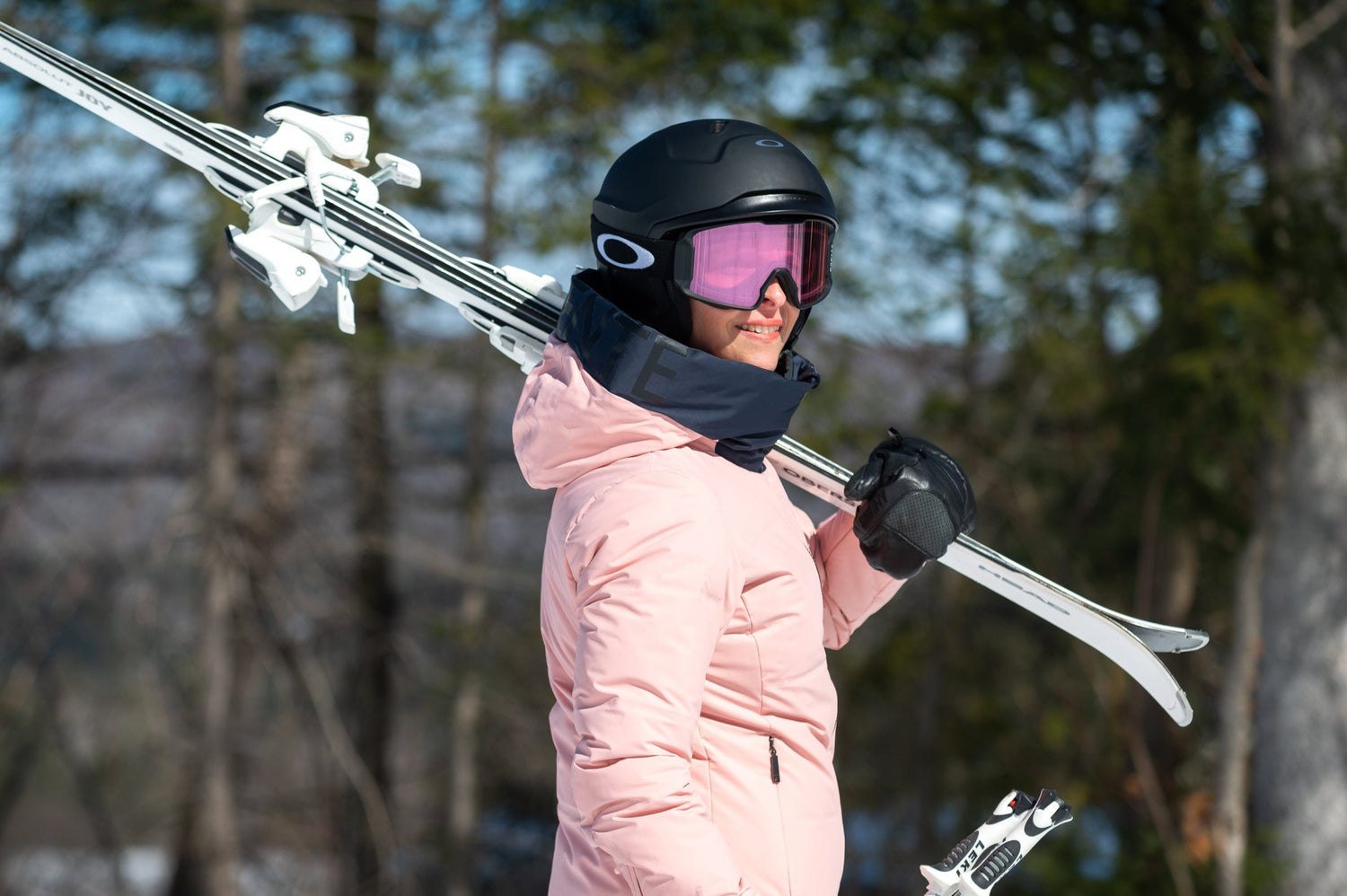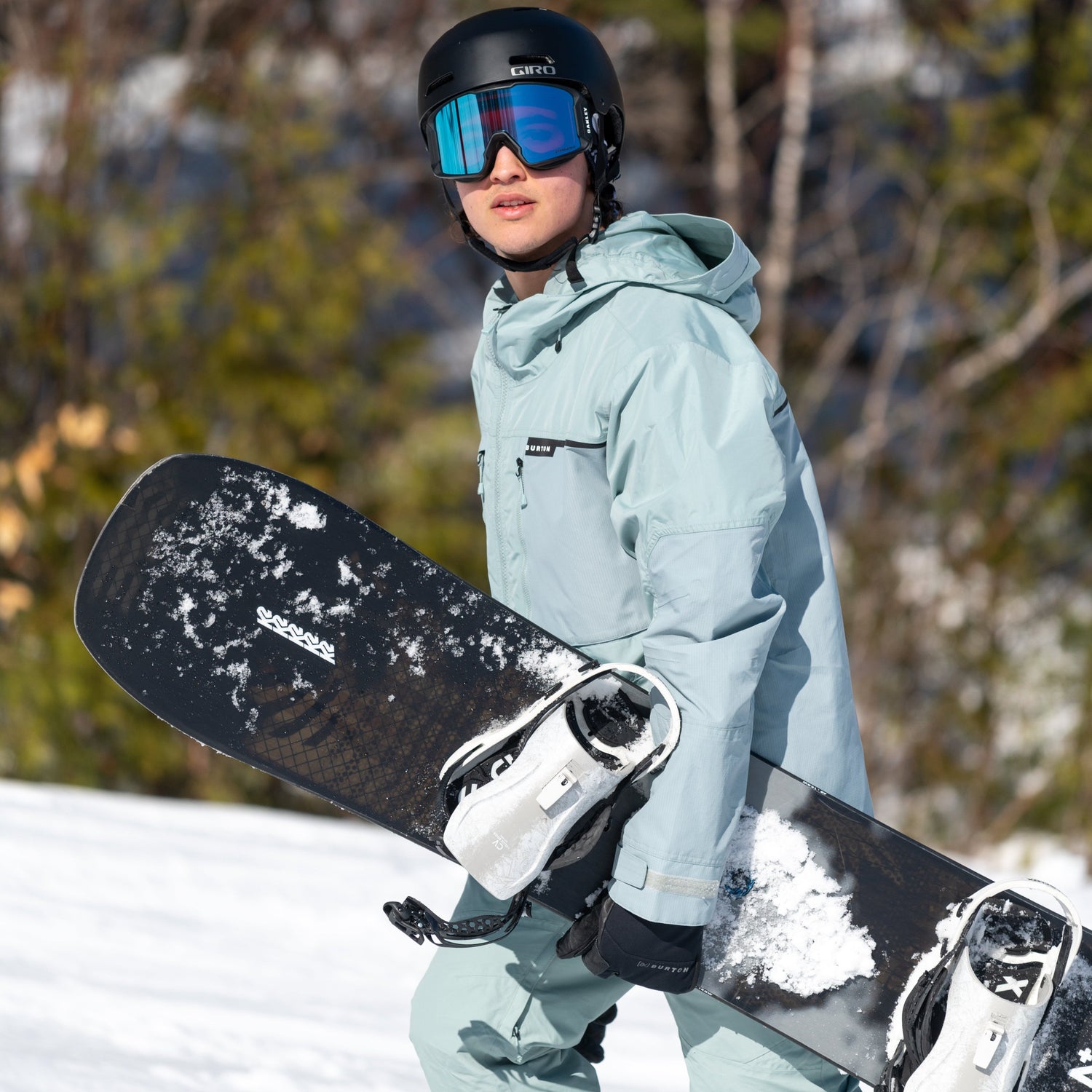1. What does a beginner mountain biker need?
Good knee and elbow pads
To protect yourself during crashes, having mountain bike pads is crucial. Both have the same role: buffering impacts.
Knee pads are the most popular. This type of protection covers your knees and sometimes part of your shins. Elbow pads do the same for your arms, protecting your elbows and forearms. Both slip on like sleeves or leg warmers. Mountain bike pads are quite comfortable and will help you avoid scratches and bruises.

Gloves
Gloves are an accessory that protects your hands and gives you a better hold on the grips. Since it’s a high-intensity sport, your hands will probably get sweaty. Wearing gloves allows you to always hang on to the grips.

Mountain bike helmet
For both climbs and descents, you need a mountain bike helmet. Its design is slightly different from that of a road bike helmet. It’s equipped with a visor that changes the helmet’s overall look and protects your face from sunlight and during falls.
Are you wondering how to choose a bike helmet? Check out our post Choosing the Right Bike Helmet.

The right bike clothes: liner shorts, shorts and jerseys
Get a good starter outfit that appeals to you. A stylish first outfit can give you a little confidence boost, and you’ll optimize comfort on the saddle.
Shop for Mountain Bike Clothing
Liner shorts
Liner shorts with chamois are a mountain biking essential. They absorb vibrations and provide you with the best possible comfort on the saddle. If you’re not used to sitting on a bike seat for a few hours, your first rides on a mountain bike can hurt. Liner shorts make a real difference.
Bike shorts
Unlike those for road biking, mountain bike shorts are worn over liner shorts for added comfort. Choose a durable, comfortable model that covers you well. Here, it’s really a matter of taste and comfort.
Jerseys
Treat yourself to at least one long-sleeved and one short-sleeved jersey so that you can choose based on the weather. Mountain bike jerseys are usually light, somewhat loose, and breathable to keep you dry during your rides. Because yes, you’ll probably be hot—especially on your first climbs!

Pedals and bike shoes
You may feel a bit unsteady during your first rides on beginner trails. We recommend starting mountain biking with platform pedals (aka flat pedals). Why? It’s simply easier to quickly put your foot on the ground if needed, which can make you feel more confident.
Unsure which kind of mountain bike pedals to choose? Our article Choosing Your Mountain Bike Pedals: Clipless or Flat? will clarify things for you.
As for bike shoes, platform pedals are compatible with most flat soles. However, a good mountain bike shoe makes a difference in grip and support. The sole’s rigidity also has better stability on the pedal’s surface.
2. Have the right bike for beginners
When you start mountain biking, find a bike that you’ll be comfortable riding. There’s no point starting with a bike that’s too high-end. Ideally, you should go to a store and take advantage of expert advice to better guide your choice.
Features of mountain bikes for beginners
-
Full suspension (dual suspension).
-
Travel: to start, travel between 120 mm and 140 mm is ideal for progressing on beginner and intermediate trails.
-
Wheels: 27.5-inch wheels allow for more agility and precision, whereas 29-inch wheels are more stable and allow you to easily ride over obstacles.
-
A trail bike is an excellent choice to start with. You will also be able to evolve over the seasons.
3. Plan a budget
Before you go to the store, set your budget. For a mid-range, full-suspension bike with an aluminum frame, prices exceed $3,000. You’ll also need clothes, pedals (they’re not included with the bike!) and protective accessories, maybe even a bike rack, such as the Thule T2 Pro.
Do the math and make a list of what you need beyond a mountain bike.

4. Choose easy trails to get started mountain biking
Beginner trails (the green ones)
There’s no point in taking on trails that are too hard. Stay within your level, and above all, accept it. All bikers start out on easier trails. So find mountain biking areas that offer beginner and intermediate trails.
The main thing is to gain confidence, develop the basic technique for your body position and practice braking. You will get the hang of shifting gears and become more comfortable on your first mountain bike.
Pump tracks
Pump tracks are great places to build confidence and practise moving well over your bike. Plus, they’re perfect for getting a feel for your suspension.
5. Ride within your limits, not those of others
Mountain biking is a sport that can be really tough on your ego. You need able to set it aside during the first few seasons. Try to keep a positive mindset and don’t put unnecessary pressure on yourself. Always heed your limits and listen to yourself.
Ride with people who build your confidence
Starting surrounded by people you trust and feel comfortable with makes all the difference. Find the right people to initiate you. They’ll wait for you and give you some tips as you’re riding.
Redo certain sections to ride them successfully
Take the time to go back and redo sections that you didn’t get the first time. That goes for both for climbs and downhills. This approach allows you to gain confidence, practise your technique and create some highlights during each outing. You will have a much more positive experience.
Analyze the trail and obstacles
When you come across an obstacle, whether small or large, take the time to analyze it if you feel the need. You will develop your skill in choosing the right lines in addition to getting to know your limits. If the obstacle is more frightening than fun, you may not be ready to ride it. Put it on your list of goals.
Ride at your own pace based on your energy level
Your energy can vary for many reasons. There’s no point going out fast without taking a break because you want to reach the top as quickly as possible and get to the downhill. Take your time, breathe and heed your fitness level.

6. Take an introductory mountain biking class
A mountain biking class for beginners is such a great gift to yourself. You’ll learn the basic techniques that are essential to riding safely and getting better. Plus, you’ll benefit from some professional advice and quality teaching.
Schools, such as LVLUP and groups, such as Les Chèvres de Montagne, give outstanding classes.
Here are some quick tips before you head out
-
Don’t forget to bring water in a bottle or hydration pack;
-
Always have a multi-tool with you;
-
Take the time to learn how to change an inner tube after a flat;
-
Get a feel for your new mountain bike on flat ground before hitting the trails;
-
Clean your mountain bike regularly;
-
Don’t forget to bring a beer for the post-ride tailgate (oh yeah, that’s part of bike culture too!);
-
Have fun and stay within your limits!



